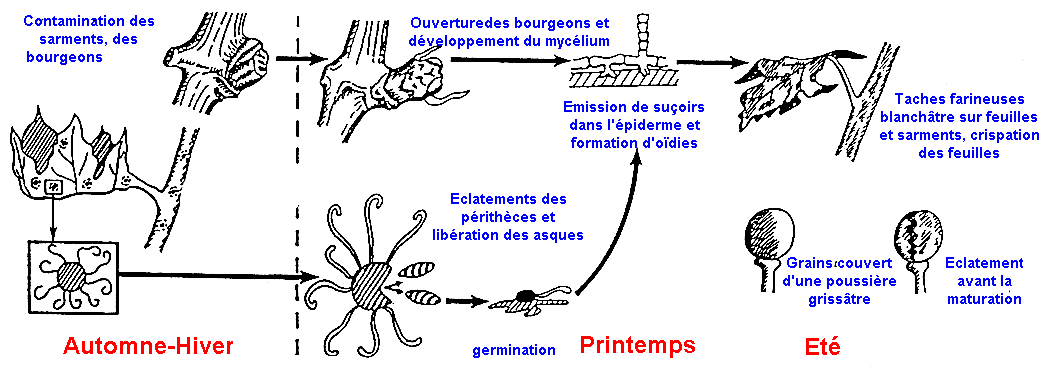What treatments are available to combat this fungus in organic agriculture?
The effectiveness of the protection depends on the quality of the spraying (nozzle and orientation adjustment towards the bunches) as well as on the choice of the optimal time for treatment. Sulphur is the product most used in the fight against powdery mildew. It can be in wettable or powder form:
Wettable sulphur is used preventively and repeatedly, and is the most commonly used formulation. It does not require additional equipment (whereas powdered sulphur must be applied with a powdering machine), has better adherence, longer residual time and better resistance to wash-off (risk of wash-off with more than 20 mm of rain), it exists in three forms:
-
Micronized: obtained by fine grinding, it comes in powder form to be dispersed in water. The particles are smaller than 5 micrometres.
-
Atomized micronized: obtained by grinding in the liquid phase and then formulated into small particles by passing through an atomizer, also to be dispersed into water. Its granulometry is very fine and regular, from 1 to 6 micrometres.
-
Concentrated or liquid suspensions: these are liquid forms, with a particle size of around 2 to 3 micrometres.
Powdered sulphur is used for shock action at the agglomerated flower bud stage (9-10 leaves) or on declared powdery mildew, it requires the use of a powdering machine, and has a higher risk of wash-off and product drift. Sulphur powder exists in two forms:
-
Ventilated sulphur obtained by simple grinding and then sieving using ventilation; the particles range in size from 15 to 100 micrometres.
-
Sublimated, obtained by distillation, is very pure and emits sulphur vapours more readily, the particle size ranges from 5 to 15 micrometres.
Other products can be used in combination with sulphur, for example, certain animal products such as skimmed milk or whey, diluted to 10-30% in water. Depending on the type of supervisory body and the origin of the products (organic milk), this practice is authorized in organic farming.
Certain preparations based on plant extracts can also be used (herbal teas or yarrow decoctions for example).



